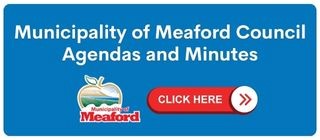Brandon Forder
 Most consumables markets in North America are governed by inspection agencies and regulating bodies that are upheld to keep consumers safe. Within the Canadian food chain, for example, we have the Canadian Food Inspection Agency (CFIA), which tests and regulates food products intended for human consumption.
Most consumables markets in North America are governed by inspection agencies and regulating bodies that are upheld to keep consumers safe. Within the Canadian food chain, for example, we have the Canadian Food Inspection Agency (CFIA), which tests and regulates food products intended for human consumption.
When it comes to the pet food industry, however, regulations are much more relaxed. In fact, there are very few requirements for standards and testing in today’s commercial pet foods. Unfortunately, this lack of regulation is highly exploited by the biggest pet food brands, who often use the lowest quality ingredients possible.
In the pet industry, which is essentially a self-regulated entity, this leaves it up to individual manufacturers to test and regulate their products for safety.
Currently, the best standards in North America for pet foods are guidelines set by AAFCO, the Association of American Feed Control Officials. The primary purpose of this organization is to regulate the sale of commercial livestock feed and drugs in the U.S., but they have also created manufacturing guidelines for pet food companies.
The function of AAFCO’s guidelines are to ensure pet foods meet at least the minimum nutritional requirements for what is considered to be a complete and balanced diet for pets. While these guidelines help set a nutritional framework for all manufacturers to follow, it does not mean every product that meets these standards is a healthy and wholesome option for pets.
What are the AAFCO standards?
All animals, including cats and dogs, require a certain amount of nutrients in order to survive.
AAFCO’s pet food standards are based on years of scientific research into animal health. A subcommittee of AAFCO called CNES, or the Canine Nutrition Expert Subcommittee, has been established to exclusively regulate dog and cat foods.
In 2007, this subcommittee established modernized guidelines for canine and feline diets. These standards govern minimum nutritional requirements; everything from vitamins, minerals, essential fatty acids, enzymes, probiotics, and more.
How are the AAFCO standards determined?
These standards have been established and updated over the course of the last century. Although AAFCO was established in 1909, their pet food division was not established until 1917. Standards are based on the best available research for pet health and nutrition, and take into account quality and sourcing of specific minerals and vitamins. These standards are based on average required nutrient density per calorie of pet food. They’re based on dry matter, meaning pet foods are measured for caloric density after moisture has been removed through processing.
How can I determine if my pet’s food meets AAFCO standards?
It is easy to tell if your pet’s food meets AAFCO standards. If it does, there will be information on the label stating as such. Again, it is important to understand that, while these standards set out the nutrient profiles required for cats’ and dogs’ daily diets, they do not address the quality of ingredients or the quality of the overall food itself.
Most commercial pet foods are highly manufactured products, and because of the degree they are processed, require synthetic supplements to meet AAFCO’s nutrient requirements.
AAFCO’s guidelines are looking for certain measurables, however overall quality is unfortunately not one of them. Because if it were, many of today’s most popular pet food brands would be pulled from the store shelves immediately.
How can I determine if my pet’s food is healthy?
Thankfully, the super-premium pet food market in Canada has grown exponentially over the last decade, and it’s now easier than ever to find high quality, Canadian-made pet foods at affordable prices.
To separate the best pet foods from the rest, begin by researching the pet food brands you are interested in. This will help to develop a better understanding of their sourcing and manufacturing processes. Key things to look for are ingredient quality, sourcing and sustainability, manufacturing transparency, recall history, innovation, and more.
In a loosely-regulated industry that is absolutely brimming with options, finding the right pet food can be an overwhelming task. Speak with your trusted pet nutrition expert to get on the right track.
Brandon Forder, known as The Pet Expert, is vice-president of Canadian Pet Connection, an industry leader in healthy pet lifestyles. Brandon holds multiple certifications in pet nutrition, and has more than twenty-five years’ experience specializing in pet health and behaviour. He has written hundreds of informative pet-related articles for newspapers, magazines, radio, and the popular Ask the Pet Expert Blog. Brandon is highly skilled in pet problem solving, and enjoys teaching others about smart and responsible pet ownership. To learn more, visit www.CanadianPetConnection.ca.










